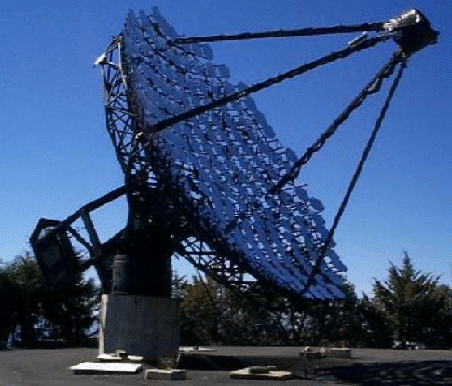CrazyNeutrino said:
“http://phys.org/news/2016-11-therapy-bees-deadly-pesticides.html”>A New Prototype Telescope Proves Itself Worthy
In 2013, the Cherenkov Telescope Array (CTA) was established with the intention of building the world’s largest and most sensitive high-energy gamma ray observatory. Consisting of over 1350 scientists from 210 research institutes in 32 countries, this observatory will use 100 telescopes across the northern and southern hemispheres to explore the high-energy Universe.
More…
That link doesn’t work. Try this one. new-prototype-telescope-proves-worthy


“Key to their efforts is a prototype dual-mirror Schwarzschild-Couder telescope, known as the Astrofisica con Specchi a Tecnologia Replicante Italiana (ASTRI) oin Sicily.”
I’m still trying to understand how it works. It can’t be …
Cherenkov radiation is generated by cosmic rays (ie charged particles), not gamma rays (electromagnetic radiation). But cosmic rays because of the Milky Way’s and Earth’s magnetic fields come in from random directions so there’s no point in pinpointing them with a giant mirror. So …
… Ah, I see, the cosmic rays are produced within the Earth’s atmosphere from gamma ray’s outside the Earth’s atmosphere. The gamma ray produces an electron-positron pair with enormous velocities. They would have to be very powerful gamma rays to generate cosmic rays powerful enough to travel faster than the speed of light.
But then there’s the second problem. How do you distinguish between faint Cherenkov radiation from an astronomical object and the much brighter blue light from the same object?
Keeping in mind that Schott noise generated by atmospheric turbulence causes a steady blue light to twinkle with transients. Perhaps the large physical spacing between individual telescope components is enough to filter out the smaller length effects due to atmospheric turbulence, combined with a minutely short time resolution.
OK. Looks interesting.

